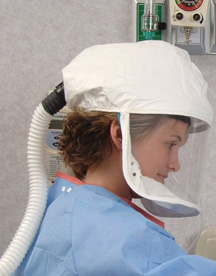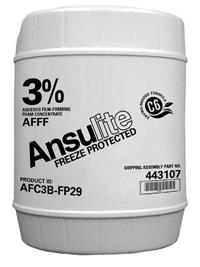



Find all of your laboratory and workplace safety supplies at Safety Emporium!
 Metastasis |
 Glossary Index |
 Mixture |
| MSDS Topics |
Free Sites | FAQ's | Regulations | Glossary | Software | Suppliers |
| Books | Forum | Poll | Fun stuff | Quiz | Store | |
| Understand your MSDS with the MS-Demystifier | Search ALL our MSDS info | |||||

Breathe easy with respirators and accessories from Safety Emporium.
A mist or fog is a microscopic suspension of liquid droplets in a gas such as the Earth's atmosphere. The term is most often used with respect to water vapor. The size of the liquid particles is usually in the range of 1 to 1,000 nanometers.
Do not confuse a fog with a vapor. Vapors are composed of single, gas-phase molecules whereas mist droplets are liquid-phase and contain thousands or millions of molecules. Many, but not all, vapors are colorless and therefore invisible, whereas fogs can generally be seen and reduce visibility. Vapors do not wet objects that they contact (although they may condense on or react with a surface) whereas mists generally do. See the vapor entry for more information about solids, liquids and gases.
Do not confuse mists with fumes which are solid airborne particles.
The term "fog" is usually applied to a suspension that has condensed from the vapor phase to the liquid phase. "Mist" is usually applied to a liquid material that becomes airborne using mechanical force or action such as a spray nozzle, splashing or agitation. In general, the terms are used interchangeably.
Fogs or mists are examples of aerosols or colloids. Further information about flammable aerosols is available.
Mists of hazardous chemicals are common in some workplaces. Examples include paint sprays, oil mists from cutting or grinding operations, and acid mists.
Meteorologists (weather forecasters) tend to use the term "mist" when visibility drops below 5 km and "fog" when it drops below 1 km. This distinction is based in part on the diameter of the water droplets and how the scattering of light changes with particle size. See the links under Further Reading below for more on light diffraction and fog/mist.
This term usually appears on a Safety Data Sheet in one of two ways:
If the mist is a hazardous material, eye and skin contact as well as inhalation is a danger. You can change your workplace practices to reduce or eliminate the formation of mists in the first place, use engineering controls such as local exhaust ventilation, and wear appropriate personal protective equipment to reduce these risks.
Also recognize that when a mist droplet hits a solid surface it will usually wet the material, compounding your problems.

Safety Emporium sells MIL-SPEC fire fighting foam concentrates and other extinguishing agents.
See also: boiling point, dust, engineering controls, fume, vapor, ventilation.
Additional definitions from Google and OneLook.
Entry last updated: Tuesday, January 3, 2023. This page is copyright 2000-2025 by ILPI. Unauthorized duplication or posting on other web sites is expressly prohibited. Send suggestions, comments, and new entry desires (include the URL if applicable) to us by email.
Disclaimer: The information contained herein is believed to be true and accurate, however ILPI makes no guarantees concerning the veracity of any statement. Use of any information on this page is at the reader's own risk. ILPI strongly encourages the reader to consult the appropriate local, state and federal agencies concerning the matters discussed herein.